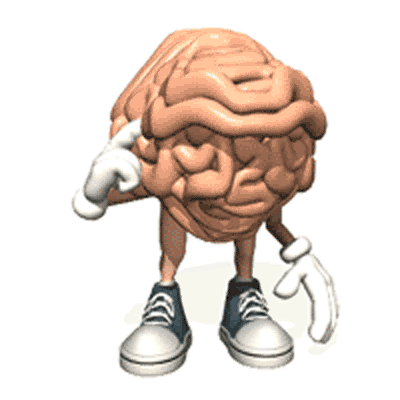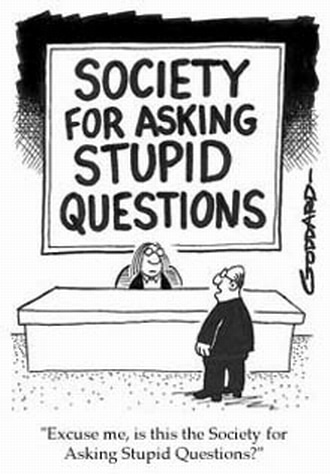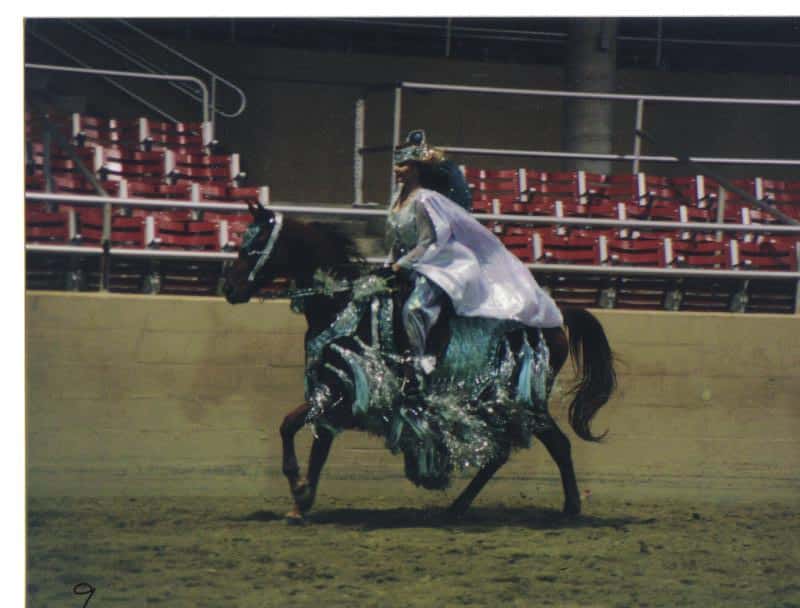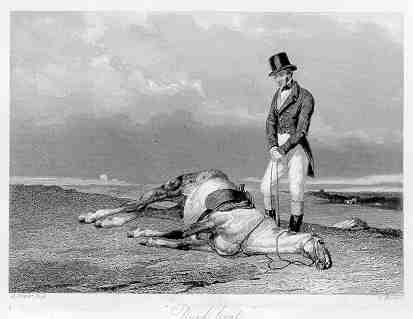 With all the stuff out there that doesn’t work, it seems to me that there’s room for an article about what does work. This is that article.
With all the stuff out there that doesn’t work, it seems to me that there’s room for an article about what does work. This is that article.
But before we start, a question. Did you ever think about what “works” means? I think that a good deal of the controversy about products and therapies is centered around what people are really saying when they say something “works.”
For a scientist, to say that something “works” means that a treatment has an effect (in our case, on the horse’s body) that can be measured objectively. So, for example:
1. Bacterial infections can cause horses to be sick
2. Certain antibiotics can be shown to kill certain bacteria (that is, shown in laboratories, and such)
3. Those antibiotics, when given to horses infected by those bacteria, can help a horse recover from the infection by killing the bacteria
4. The antibiotic “works”
But what if the horse had an infection, it wasn’t caused by a bacteria (say, it was caused by a virus), the horse got antibiotics, and the horse got better? Many people would quite reasonably conclude that the antibiotics “worked” – the horse got better following the antibiotic. And they would be happy.
 Even thought they would be happy, the antibiotic wouldn’t have done anything. And, even though the horse got better (the most important thing), and the people were happy, the fact that that the antibiotic really didn’t “work” would also be important. In the case of giving needless antibiotics, it would be important for several reasons.
Even thought they would be happy, the antibiotic wouldn’t have done anything. And, even though the horse got better (the most important thing), and the people were happy, the fact that that the antibiotic really didn’t “work” would also be important. In the case of giving needless antibiotics, it would be important for several reasons.
1. If antibiotics are given needlessly, it increases the pressure on bacteria, and causes increased chances of antibiotic resistance over time. This, of course, is a very real phenomenon, and now, after decades of pretty indiscriminate use of antibiotics, a pretty real problem for all species that get antibiotics. It’s such a big problem that the US Center for Disease Control has a whole section on the subject. The same thing can be said for dewormers, by the way (just substitute the word “dewormer” for “antibiotic” in the first two sentences and it reads as well).
2. It would be a waste of the person’s time and money. I mean, if you’re like me, you’ve taken advantage of plenty of chances to waste your time and money (for me, a little green sports car that I bought years ago comes to mind). Still, I personally like to make a conscious decision to waste my time and/or money, and not find out that I did it after I was enticed to do it.
3. There’s some risk to the horse from giving antibiotics, that is, horses can develop problems secondary to the administration of antibiotics. For example, antibiotic-associated colic and diarrhea do occur, and while not common, it’s certainly not something that you want to risk for your horse by using antibiotics needlessly.
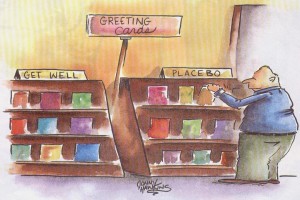 The point here is that it’s one thing to say that something “works” when you say that it has a measurable effect on the horse’s body – it’s quite another to say that someone thinks a treatment “works” because they think that their horse is better after receiving some treatment (any treatment). Something that has a measurable effect can often make the horse feel good – many of the things that don’t have an effect mostly make the horse’s owner feel good. And, personally, I think it’s important to try to tell which is which.
The point here is that it’s one thing to say that something “works” when you say that it has a measurable effect on the horse’s body – it’s quite another to say that someone thinks a treatment “works” because they think that their horse is better after receiving some treatment (any treatment). Something that has a measurable effect can often make the horse feel good – many of the things that don’t have an effect mostly make the horse’s owner feel good. And, personally, I think it’s important to try to tell which is which.
If you read through my website (doctorramey.com), you’ll find lots of articles about things that don’t work, some of which don’t work to the tune of billions of dollars a year (the vast majority of supplements come immediately to mind, but they’re certainly not the only culprit). But I thought it might be helpful to make a list of a few of the substances that do work – that is, that have measurable effects on your horse – just so you don’t think that I’m some sort of a therapeutic nihilist.*
1. Non-steroidal anti-inflammatory drugs. Let’s call them NSAID’s (so I don’t have to spell it out every time). Very useful. Everywhere. The bute, Banamine®, Equioxx® (the product for made for dogs is called Previcox®, but it’s the same drug), and Ketofen® (and several others) that may even be in your tack box fall into this class of drugs.** They demonstrably do a few things, including relieve pain, relieve inflammation, and (for better or worse) get in the way of blood clotting a little bit. They are probably the most used – and overused – drugs in horses. Scientific evidence suggests that they all 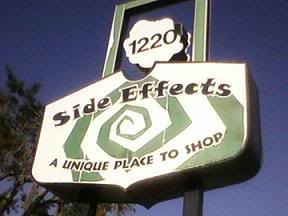 work about the same, so, in my opinion, it’s probably not worth spending lots more money to use one over the other, although for some horses, one may work better than another (for me, for example, ibuprofen works well on a headache, but aspirin doesn’t and both drugs work along the same chemical pathways). They do have some reported side effects, but the concern over side effects is WAY more than the actual incidence of side effects, and sometimes that concern is exploited by people who have their own products or approaches to sell. Horses – and their owners, are lucky to have NSAIDs.
work about the same, so, in my opinion, it’s probably not worth spending lots more money to use one over the other, although for some horses, one may work better than another (for me, for example, ibuprofen works well on a headache, but aspirin doesn’t and both drugs work along the same chemical pathways). They do have some reported side effects, but the concern over side effects is WAY more than the actual incidence of side effects, and sometimes that concern is exploited by people who have their own products or approaches to sell. Horses – and their owners, are lucky to have NSAIDs.
2. Antibiotics – One of the great advances in the history of medicine (still much less than 100 years old). If your horse has a bacterial infection, they can be life-saving. Certain antibiotics are more likely to kill certain bacteria than are other antibiotics. There is some incidence of side effects, but not commonly, especially when used appropriately. They are probably overused, just like in people – many infections of horses are caused by viruses, and viruses aren’t affected in the least by the presence of antibiotics. But it’s pretty hard to practice effective medicine on horses without them.
3. Anesthetics – Local anesthetics take the sting out of painful areas. Without local anesthetics, it would be oh-so-hard to practice veterinary medicine. Local anesthetics allow me to sew up wounds, do nerve blocks on lameness exams, or treat scratched eyes (to name a few). General anesthetics let veterinarians do minor and major surgeries, like castrations, or colic surgeries, respectively. You know that they  work because the horse doesn’t kick you (when you start sewing), or limp (when the sore spot is blocked), or he lies down and let’s you cut into his belly (for colic surgery). Anesthetics revolutionized the treatment of horses and I’m very glad that I never had to practice without them.
work because the horse doesn’t kick you (when you start sewing), or limp (when the sore spot is blocked), or he lies down and let’s you cut into his belly (for colic surgery). Anesthetics revolutionized the treatment of horses and I’m very glad that I never had to practice without them.
4. Corticosteroids – Powerful relievers of inflammation. Corticosteroids help stop inflammation in joints, in allergic reactions, in lungs, in the eye, and just about anywhere else. There are several different kinds, used depending on the problem, and the location. People have an exaggerated fear of these drugs, too, and particularly so in regards to an association with laminitis that has yet to be proven, although many people seem to be convinced occurs. I’ve seen plenty of horses that should have been given steroids that weren’t – it’s pretty silly to avoid an effective treatment because of a side effect that, if it occurs, doesn’t occur very often. I mean, people get killed in car accidents every day – does that mean you’re not going to drive?
5. Antiseptics – Great products that kill bacteria and even viruses on contact. Your Betadine®, your alcohol, your bleach, and your Nolvasan® are all antiseptic. Use them to clean your hands, your horse, and your horse’s stall. Gotta love ’em – gotta have ’em.
6. Sedative/Tranquilizers – For most of history, people treating horses had to do without sedative/tranquilizers. I can’t imagine. As much as I love horses, and as much as I love working on horses, sometimes they don’t love me. If a horse has a cut to sew up, an eye to examine, or a hairy body that needs to be trimmed by the whirring devil that is an electric clipper, your life will be a lot easier if your horse is sedated. Of course, there are lots of other reasons why people use sedatives, some of which are against the rules, such as giving a horse a tranquilizer prior to it setting hooves into the show ring. But they work, and they make everyone’s life easier.
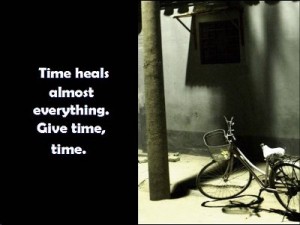 7. Time – Maybe I should have put this first. “Time heals all wounds.” In fact, time doesn’t heal all wounds, but without it, when it comes to treating horses, we’d be sunk. Time is also probably the biggest culprit in fooling people into thinking that some treatments work when they really don’t; if you give just about any therapy long enough, the condition may heal in spite of what you’re doing. Of course, in such circumstances the treatment usually gets the credit, and yet another opportunity to waste money arises.
7. Time – Maybe I should have put this first. “Time heals all wounds.” In fact, time doesn’t heal all wounds, but without it, when it comes to treating horses, we’d be sunk. Time is also probably the biggest culprit in fooling people into thinking that some treatments work when they really don’t; if you give just about any therapy long enough, the condition may heal in spite of what you’re doing. Of course, in such circumstances the treatment usually gets the credit, and yet another opportunity to waste money arises.
8. Fluids – Is your horse clinically dehydrated? Is he having trouble keeping up with his fluid needs because of illness? Is he constipated? If so, he needs fluids. Orally or intravenously, as needed, fluids are life savers. You can lead a horse to water, and if he doesn’t drink, you can always give him fluids (after all, there are ways around some problems).
There are certainly plenty things that work that I haven’t put on the list. Medication to treat gastric ulcers comes to mind. Surgery usually works pretty well, depending on a lot of factors, of course. Most drugs used in reproductive medicine work pretty well. Many medications used specifically for the eye (that you’ll probably never have to use) would make the list.
NOTE: Nothing works every time. Even when medications “work,” that is, even when they have a measurable effect, that doesn’t necessarily mean that they are going to be successful – an overwhelming bacterial infection can still kill a horse, in spite of him being given antibiotics, for example.
 OH BY THE WAY: In case you are wondering, there’s a reason why I don’t include most joint medications (except corticosteroids), supplements, or “alternative” treatments. Most of them don’t have much – if any – evidence that they work (in terms of having some measurable effect). They certainly have the capability of making horse owners feel better – but that’s a different definition of “works.”
OH BY THE WAY: In case you are wondering, there’s a reason why I don’t include most joint medications (except corticosteroids), supplements, or “alternative” treatments. Most of them don’t have much – if any – evidence that they work (in terms of having some measurable effect). They certainly have the capability of making horse owners feel better – but that’s a different definition of “works.”
Anyway, to me, it just doesn’t make any sense to pay for stuff that doesn’t have a measurable effect on the horse’s body. But not everyone feels that way, apparently. Or, to paraphrase Sasha Baron Cohen, in “The Dictator,” the sometimes funny and regularly crass movie – “I love it when a horse gets a joint supplement. It’s like seeing a monkey on rollerskates; it means nothing to them, but it’s so adorable for us.”
When push comes to shove, in my opinion, you owe it to you and your horse to rely on something that works – really works.
**************************************************************************************************************************************
A person who accepts or champions nihilism; An absolute skeptic; a person who believes in the truth of nothing.” That’s not me.
** Also, your Advil®, Motrin®, Aleve®, Excedrin®, etc., etc.

